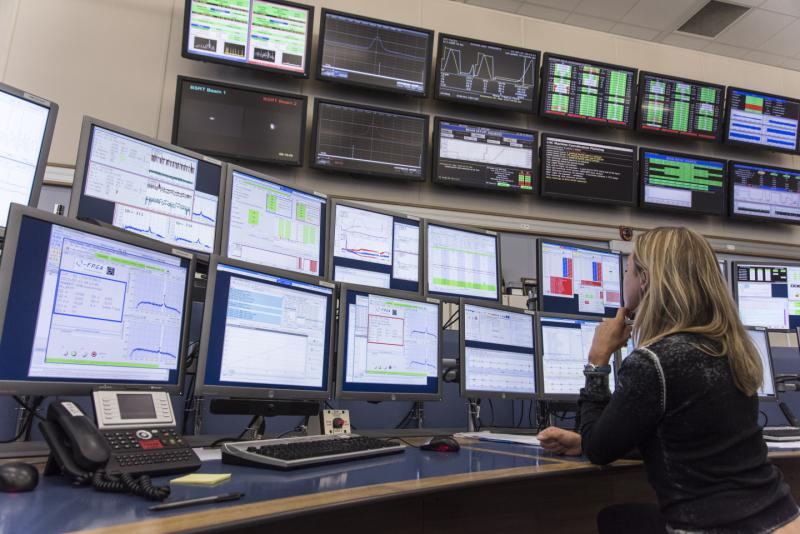Over the next 24 hours, beams of protons should collide in the Large Hadron Collider (LHC) at the record-breaking energy of 13 teraelectronvolts (TeV) for the first time. This is one of the many steps required to prepare the machine before the LHC's second physics run can begin. The LHC Operations team plans to declare "stable beams" in the coming weeks – the signal for the LHC experiments to start taking physics data at this new energy frontier.
"We begin by bringing the beams into collision at 13 TeV, and adjusting their orbits to collide them head-on," says Ronaldus SuykerBuyk of the Operations team.
Last month proton beams were back in the accelerator for the first time after two years of intense maintenance and consolidation. The first beam at the record energy of 6.5 TeV circulated on 10 April, and the first collisions – at the lower beam energy of 450 gigaelectronvolts (GeV) – followed.
The team has already checked and fine-tuned all the beam instruments, magnets and collimators along the 27-kilometre accelerator for collisions at 900 GeV. But when beam energy increases to 6.5 TeV, the beam parameters and orbits change significantly as compared to 450 GeV. In addition, the beams are focused down to a much smaller spot size within the experiments and as a consequence the location of collisions changes.
"When we start to bring the beams into collision at a new energy, they often miss each other," says Jorg Wenninger of the LHC Operations team. "The beams are tiny – only about 20 microns in diameter at 6.5 TeV; more than 10 times smaller than at 450 GeV. So we have to scan around – adjusting the orbit of each beam until collision rates provided by the experiments tell us that they are colliding properly."
The design of the LHC allows more than 2800 bunches of protons to circulate in each beam at a time. But the LHC Operations team will start collision tests with just one or two bunches per beam at the nominal intensity of 1011 particles per bunch to ensure that all is running smoothly.

Once they have found the points at which the beams interact optimally to give the most physics data, collimators have to be positioned accurately around the beam orbits to intercept particles that stray from the beam before they can hit magnets or detectors. "When the positioning of all collimators has been validated the LHC will switch over to production mode," says Wenninger, "and become a 'collision factory', delivering data to experiments." At this point, the experiments will switch on fully, and LHC Run 2 will begin.
In the meantime, the large LHC experiments ALICE, ATLAS, CMS and LHCb will use the test data to check specific parts of their detectors for the upcoming physics run.
"The collisions at 13 TeV will allow us to further test all improvements that have been made to the trigger and reconstruction systems, and check the synchronisation of all the components of our detector," says CMS spokesperson Tiziano Camporesi.
“These data are precious to complete the fine tuning of the preparation for the run,” says ALICE spokesperson Paolo Giubellino. “ALICE has installed new detectors during the shutdown, and has significantly upgraded the trigger and readout. The validation of the new hardware will greatly benefit from the first data.”
"Although these collisions are not used for physics studies, they are useful for refining the synchronization of the readout time of different parts of the calorimeters and muon detectors," says LHCb spokesperson Guy Wilkinson.
"These 13 TeV data allow us to work on further improving the ATLAS detector readiness, following the recent 900 GeV collisions," says ATLAS spokesperson Dave Charlton. "The higher energies mean that we expect more active and energetic events, which will let us probe more deeply into the detector, for example."
Declaring "stable beams" will be only the beginning for the LHC Operations team. "We’re still working on the injection chain to the LHC, and finalising the collimators," says Wenninger. “And the machine evolves around you. There are little changes over the months. There’s the alignment of the machine, which moves a little with the slow-changing geology of the area. So we keep adjusting every day."
This week's collisions at 13 TeV are to check that CERN's flagship – the LHC – is sea-worthy. But we haven't yet begun the voyage to new frontiers.
